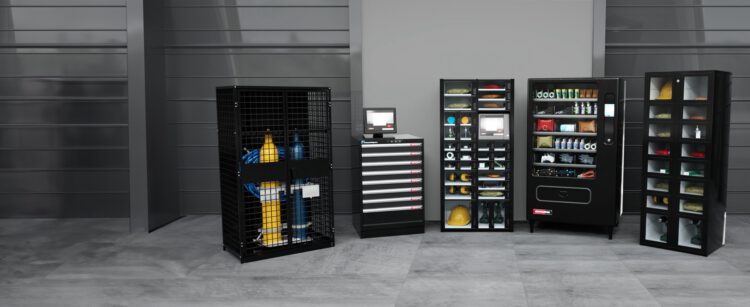Overcoming Challenges In Industrial Vending Adoption
Industrial vending machines are revolutionising inventory management across industries, offering unparalleled benefits such as reducing waste, improving efficiency, and streamlining operations.
by a.huynh |
However, as with any innovation, implementing industrial vending solutions often comes with hurdles. From financial considerations to employee adoption and system integration, these challenges may deter organisations from leveraging the full potential of this cutting-edge technology.
If you’re considering industrial vending for your business but are unsure how to address potential obstacles, this guide will walk you through everyday challenges and provide actionable strategies to overcome them.
Why Industrial Vending Matters
Before we discuss solutions, it’s essential to understand why industrial vending has gained prominence in sectors ranging from manufacturing to construction. Industrial vending machines provide businesses with a means to manage inventory in a more controlled, efficient, and cost-effective manner.
Key benefits include:
- Enhanced inventory control through real-time tracking and monitoring.
- Reduced waste and overstocking by ensuring only what’s needed is replenished.
- Minimised downtime as essential tools and supplies are accessible at any time.
- Cost savings by preventing misuse or theft of items.
Despite these advantages, many businesses face apprehensions during the adoption phase. Let’s explore these challenges in detail.
Common Challenges In Industrial Vending Adoption
- High Initial Investment
One of the primary concerns for businesses is the upfront cost associated with purchasing and installing industrial vending machines. These costs can include the machines themselves, software, installation, and any customisations required. For smaller businesses or those operating on tight budgets, this can seem like an insurmountable barrier.
- Resistance to Change
Front-line employees may be hesitant to adopt industrial vending, particularly if they’re used to more traditional inventory systems. Resistance to change often stems from fear of the unknown, a perceived increase in workload, or scepticism about how the system will benefit them personally.
- Complexity of Integration with Existing Systems
Modern industrial vending systems often come equipped with advanced software for inventory tracking and analytics. However, integrating these systems into a business’s existing enterprise resource planning (ERP) or supply chain management (SCM) platforms can be a daunting task, especially for organisations with limited IT resources.
- Insufficient Training
For industrial vending systems to be effective, employees across various levels need to understand how to use them. Without adequate training, inefficiencies can arise, rendering the system less valuable and reducing user buy-in.
- Long-term Maintenance and Support
Another challenge lies in the upkeep of vending machines. Businesses worry about ongoing technical support, regular maintenance requirements, and the potential costs of system downtime.
Solutions And Strategies To Overcome These Challenges
While the challenges might seem significant, they are far from insurmountable. With the right strategies, businesses can pivot towards successful adoption of industrial vending solutions.
- Addressing the Initial Investment with Financing Options
Cost pressures don’t have to be a deal-breaker. Here’s how businesses can mitigate the financial burden of industrial vending adoption:
- Leasing or Renting: Many suppliers offer lease or rental options for vending machines, allowing businesses to spread costs over time rather than making a large upfront investment. At Tooling Intelligence, we also offer leasing or hiring options to suit your requirements.
- Financing Packages: Some providers offer in-house financing or work with third-party lenders, offering flexible payment plans.
- Demonstrating ROI: Conducting a cost-benefit analysis can highlight the long-term savings and efficiency gains, convincing stakeholders that the value far outweighs the initial cost.
- Winning Over Employees
Resistance to change can be softened by addressing employee concerns and ensuring user-friendliness.
- Transparent Communication: Clearly outline the benefits of industrial vending to employees, focusing on how it makes their work easier (e.g., faster access to tools).
- Employee Engagement: Seek input from employees during the decision-making process. Including their feedback can improve buy-in.
- Gamification: Introducing elements like rewards for early adopters can make the transition more engaging.
- Simplifying System Integration
Integrating industrial vending systems with existing software solutions can seem complex, but these strategies can ease the process:
- Collaborate with Suppliers: Work with vending machine providers who specialise in seamless ERP and SCM integrations. Many vendors now offer out-of-the-box integrations.
- APIs and Middleware: Leverage APIs or middleware designed to connect vending software with existing platforms, reducing the complexity of manual data sharing.
- Phased Implementation: Instead of attempting a blanket integration, introduce the system in manageable phases to minimise disruption.
- Ensuring Comprehensive Training
Training is critical to the success of any new system. A robust training programme should include the following measures:
- Hands-On Demonstrations: Allow employees to interact directly with the machines during training sessions.
- Customised Training Materials: Provide manuals, video tutorials, and FAQs tailored to the specific vending machines your business uses.
- Ongoing Support: Appoint vending “champions” who can provide ongoing support to colleagues, ensuring no one is left behind.
- Planning for Maintenance and Support
Proactive planning can minimise downtime and ensure that your machines continue to run efficiently.
- Service Contracts: Opt for service agreements with your supplier to cover preventative maintenance and repairs.
- Remote Monitoring Solutions: Some vending systems enable suppliers to monitor and address technical issues remotely.
- Regular Audits: Conduct regular system checks to catch potential issues early.





